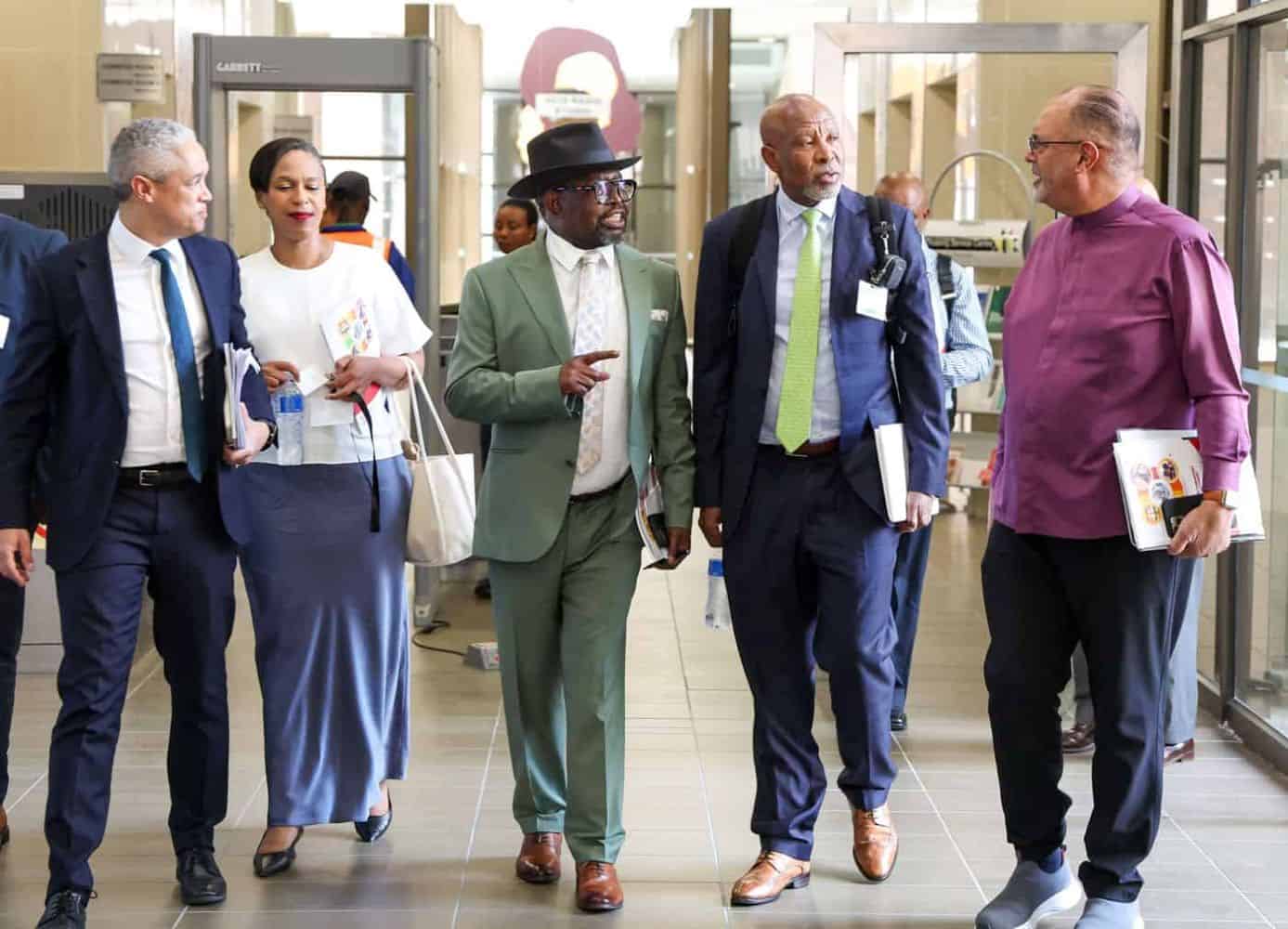He had news many people were waiting for on the inflation target, the fiscal anchor and a budget surplus of R19.7 billion.

After Budget 2025 was postponed twice, Finance Minister Enoch Godongwana was at his post in parliament on time this afternoon to deliver the MTBPS.
Godongwana pointed out that global growth is estimated to slow slightly, to 3.2% in 2025, amid ongoing trade tensions, geopolitical uncertainty and supply chain disruptions.
“While the shocks of the unilateral tariffs imposed by the US have not materialised as severely as expected, their delayed effects, coupled with rising protectionism, pose future risks to global productivity and price stability.
“Global equity markets have surged, driven by AI-related stocks and central bank rate cuts, but this rally carries the risk of sudden reversals. Given this uncertainty, it is critical that we leverage the immense opportunities presented by the sub-Saharan region.”
ALSO READ: This is why South Africa’s economic growth deteriorated since 2005
Trade and GDP in the MTBPS
He said we continue to make progress in the implementation of the Africa Continental Free Trade Agreement to strengthen multilateralism and regional cooperation. “Under the South African presidency of the G20, significant strides have been made to strengthen macroeconomic fundamentals of debtor countries, many of them African, to build a more prosperous region and continent to support faster trade.
“Domestically, we forecast real gross domestic product (GDP) growth of 1.2% for 2025, more than double the economic growth in 2024. The growth outlook strengthens moderately over the medium term, and we now forecast real GDP growth will average 1.8% between 2026 and 2028.”
Godongwana said the structural reforms government embarked on, particularly in energy and logistics, will be key to lifting South Africa’s rate of growth closer to levels demanded by the country’s developmental needs.
He emphasised that government’s strategy for faster economic growth and healthier finances continues to be anchored on these four pillars:
- maintaining macroeconomic stability
- implementing structural reforms
- building state capability and
- supporting growth-enhancing infrastructure.
ALSO READ: GDP higher, but where are the investments for economic growth?
MTBPS shows government debt stable at 77.9% of GDP
Godongwana said he was pleased to inform the country that government is on track to restore fiscal sustainability. “Government debt will stabilise in 2025/26, at 77.9% of GDP. This is the first time since the 2008 financial crisis that public debt will not grow as a percentage of GDP.
“Since 2008, spending has consistently exceeded revenue, driving up debt and debt-service costs. These costs crowded out spending on critical services and exerted pressure on lending rates across the economy.”
However, he said, government is now turning this around. “This year, revenues will exceed the budget estimates by R19.3 billion, while debt-service costs will be lower by R4.8 billion. Over the MTEF, debt-service costs will grow by 3.8% annually.
“This is a significant reduction from the 7.4% growth anticipated at the time of the 2025 Budget. We will also achieve a primary budget surplus of R68.5 billion, or 0.9% of GDP, this year that will grow to R224 billion by 2028/29. The overall budget deficit will narrow from 4.5% of GDP in 2025/26 to 2.7% in 2028/29.
ALSO READ: IMF expects SA economy to grow by 1.1%, not too worried about US tariffs
Minister launches Procurement Payments Dashboard in MTBPS for more transparency
Godongwana also used the opportunity to launch government’s first Procurement Payments Dashboard that uses data from government’s Basic Accounting System (BAS) that is available on the National Treasury eTender website.
The dashboard shows the payments made to suppliers by most national and provincial government departments as captured on our payments system.
Godongwana said this represents a massive step forward in procurement transparency. “The dashboard will help to identify inefficiencies, anomalies and uncovering opportunities for consolidation.
“It also enables analysis of procurement expenditure and the suppliers that do business with the state, giving citizens, academics and civil society the ability to hold departments accountable while supporting efforts to fight corruption and fraud.”
ALSO READ: Ghost workers probe ‘could save billions’
MTBPS promises war on ghost workers
He said government is also waging war on ghost workers in the public service. “We heard calls from all political parties and civil society.
“National Treasury is working closely with the Department of Public Service Administration and Home Affairs on a data-driven approach that integrates systems across government. We are beginning to see the results of this collaboration and have already uncovered close to 9 000 high-risk cases that were flagged for further verification.
You can never keep everyone happy, and people who were listening for any mention of what is happening to medical scheme tax credits, bracket creep, lifting the ceiling on tax-free savings accounts and National Health Insurance were disappointed.
Godongwana also said nothing about a broader credit guarantee scheme, how government will finance the Integrated Resources Plan and bail-outs for struggling SOEs such as the SABC and Denel that are in dire straits financially.






